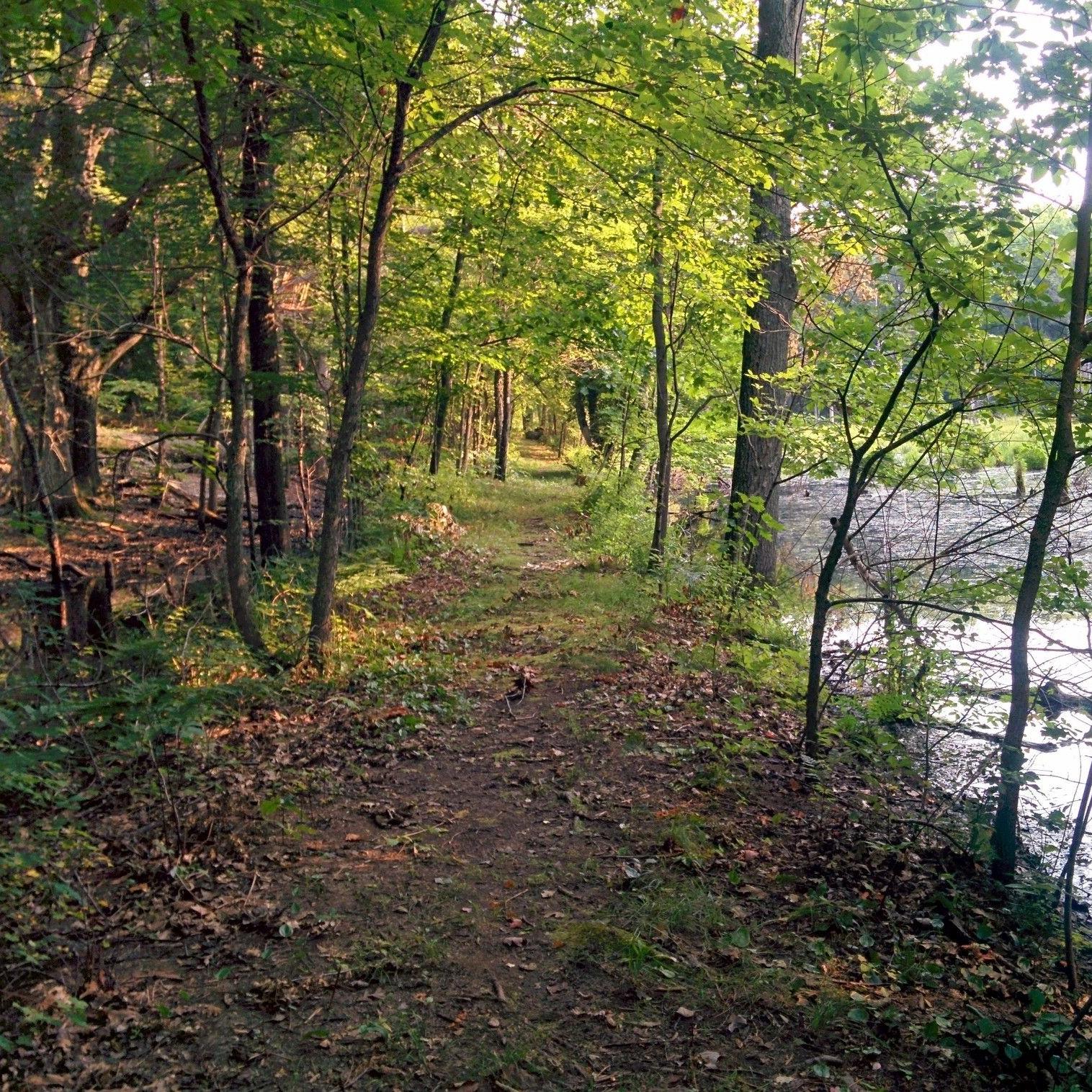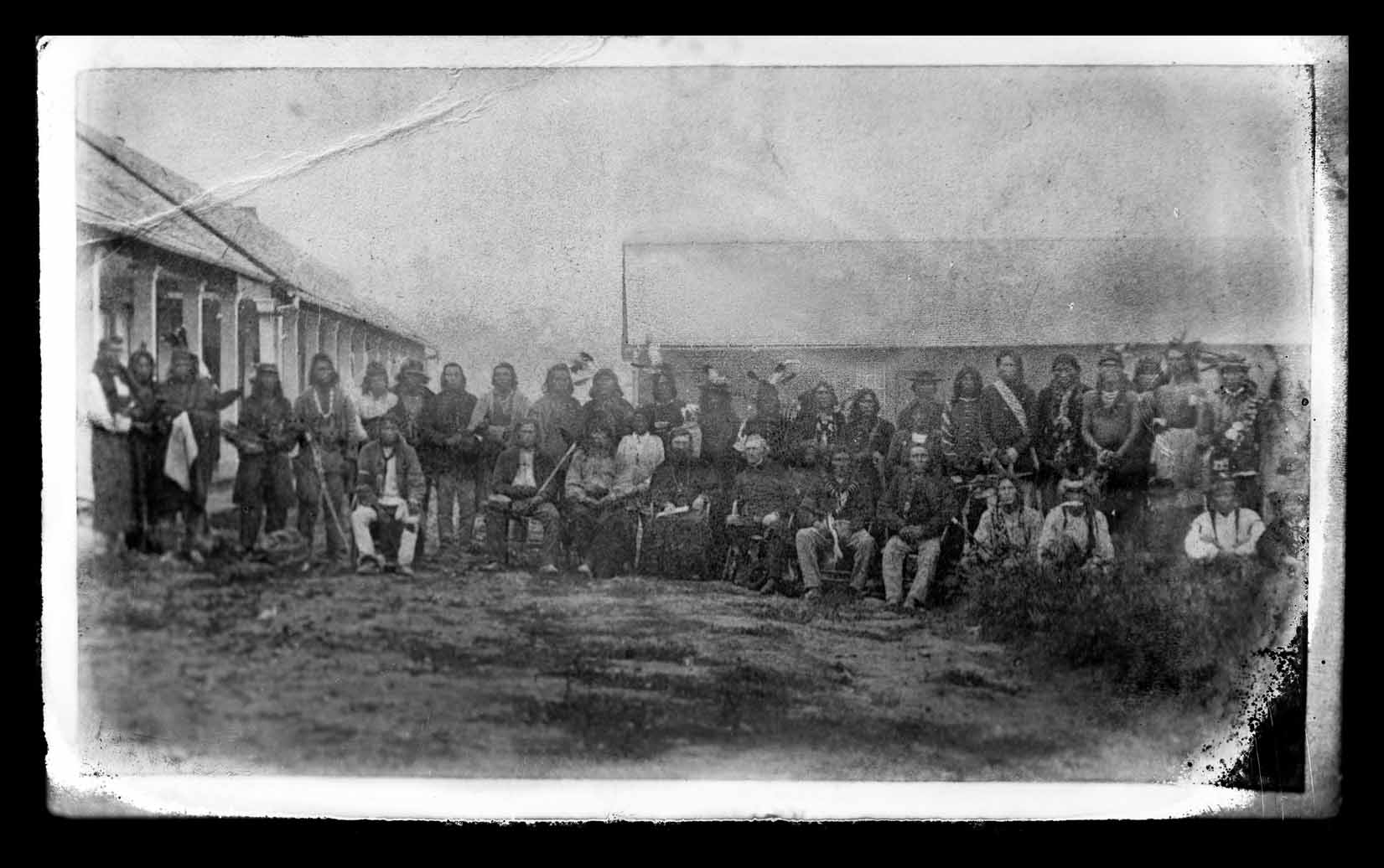Teach This Poem is a weekly series featuring a poem from our online poetry collection, accompanied by interdisciplinary resources and activities designed to help K-12 teachers quickly and easily bring poetry into the classroom.

Photo credit: National Park Service.

Photo credit: State Historical Society of North Dakota.
The following activities and questions are designed to help your students use their noticing skills to move through the poem and develop their thinking about its meaning with confidence, using what they’ve noticed as evidence for their interpretations. Read more about the framework upon which these activities are based.
- Warm-Up (pair share): Make a list of different gestures and symbols that make you think of peace. Share your lists with a partner.
- Before Reading the Poem (individual writing): What, specifically, do you notice in the photograph from the North Country National Scenic Trail? What is the photograph of? What colors do you see? What perspective is the photograph taken from? Can you imagine a place where the trail might be leading? How might going down this trail make you feel? Why?
- Small-group Discussion: Share what you’ve noticed, imagined, and felt with your group members. Do you all agree, or do you have different interpretations?
- Reading the Poem: Read the poem silently. Write down the words, phrases, and structures that jump out at you.
- Listening to the Poem (enlist two volunteers to read the poem aloud): Listen as the poem is read aloud and write down any additional words and phrases that jump out at you.
- Small-group Discussion: Share what you noticed from reading and hearing the poem. How is the poem structured? Why do you think the poet structured it this way? Is any part of the poem repeated, perhaps with slight changes? Why might the poet have repeated these words?
- Whole-class Discussion: How does the structure of the poem relate to its content? How does it relate to the photograph of the trees? What is the history recounted in this poem? What in the poem tells you this? How does the image of the tall grass make you feel at the beginning of the poem, and do you feel differently when the image is repeated at the end?
- Extension for Grades 7-10 (research activity): What can you learn about the Ojibwe and Dakota tribes and their histories? Write an essay about what you have learned.
- Extension for grades 11-12: It is possible to look at the two sides of the poem “Peace Path” as two separate poems or as two halves of the same story. How might these be seen as two separate poems? What are the similarities and differences between the stories they tell? If you look at the two sections as part of one poem, how do they interact with each other in content and structure?
About this poem, Heid E. Erdrich writes, “The North Country Trail leaves Minnesota and heads toward Fort Abercrombie just above my hometown—Wahpeton, North Dakota. This poem envisions the tallgrass prairie as I have seen last remaining swaths of it in areas of the trail. The poem depicts events that took place when the grassland was unbroken and when our great-grandfather, Keesh-ke-mun-ishiw/Joseph Gourneau, serving as an altar boy and standard bearer for a Catholic priest, was photographed at Fort Abercrombie in 1870. The path the North Country Trail traces from the Lake Superior shore through the North Dakota grasslands, maps the migration of my Ojibwe ancestors as they moved, and were removed, from their territories as treaties decreed. For me, and for other Native Americans, a map of the trail tells a specific story, one of tribal history. The Grasslands stand as an emblem of peace for me—the hush of wind in tall grasses, the surprise of wild roses and rare lilies, the open faces of sunflowers in fields, the prairie potholes where water is life and the home of thousands of birds—this peace, like the weathered wooden structures of previous centuries, remains for everyone to walk by along the western section of the North Country Trail.”
